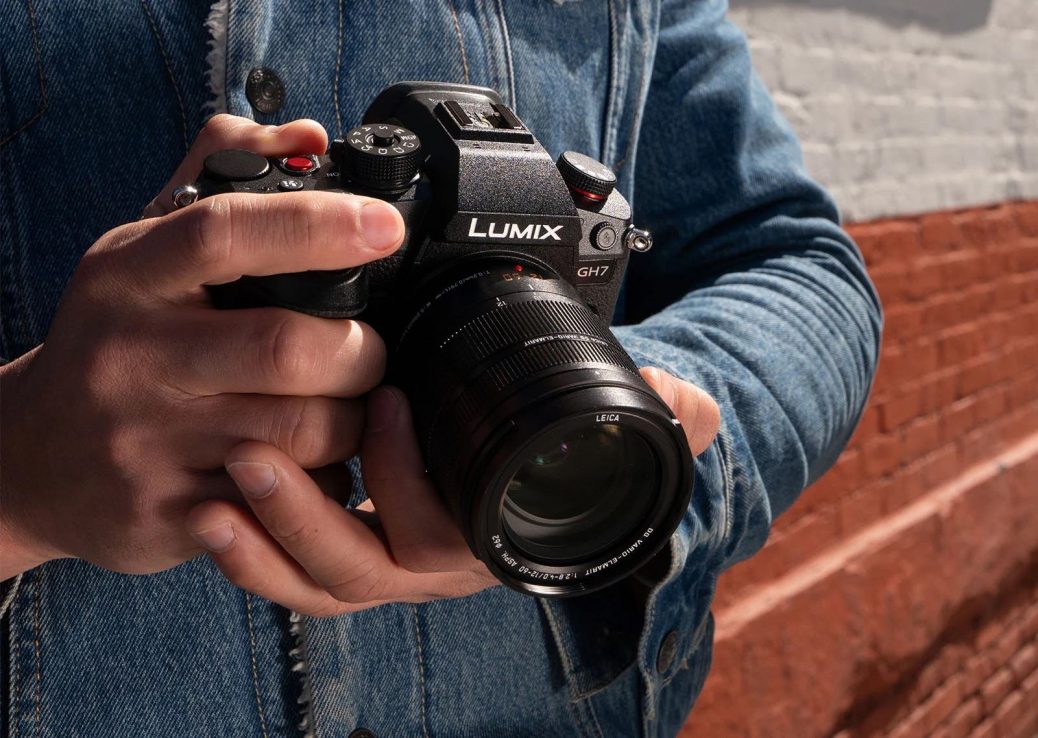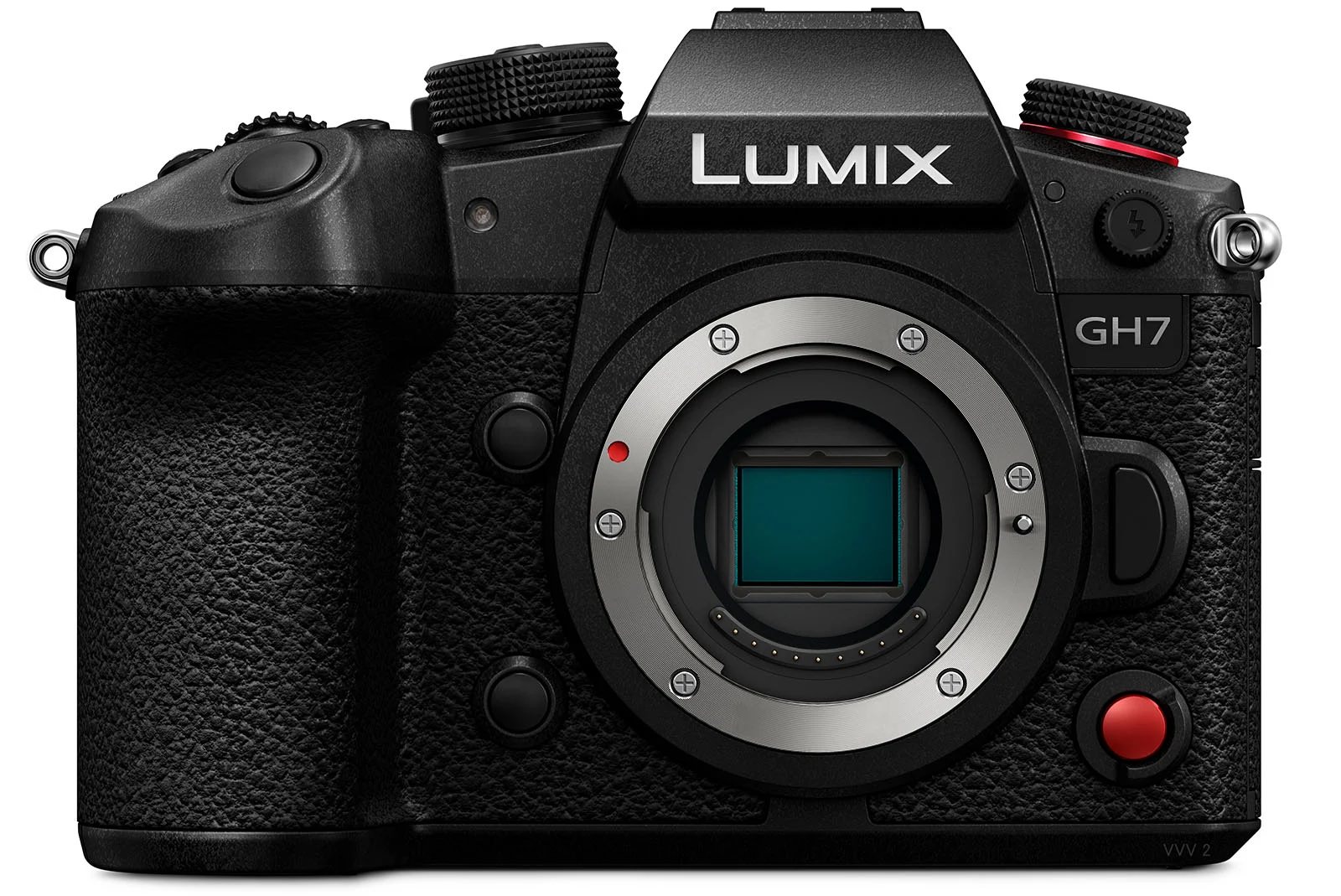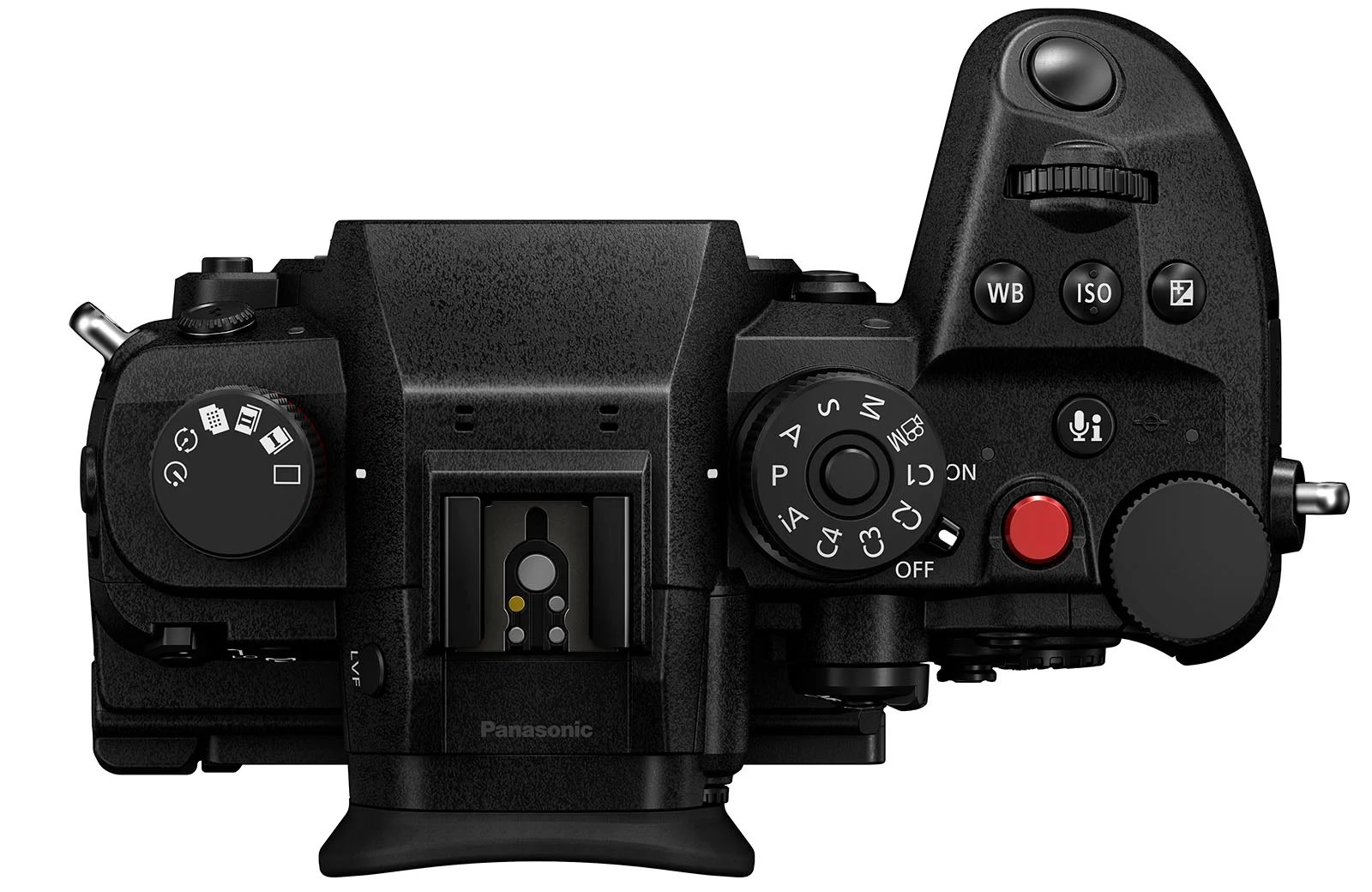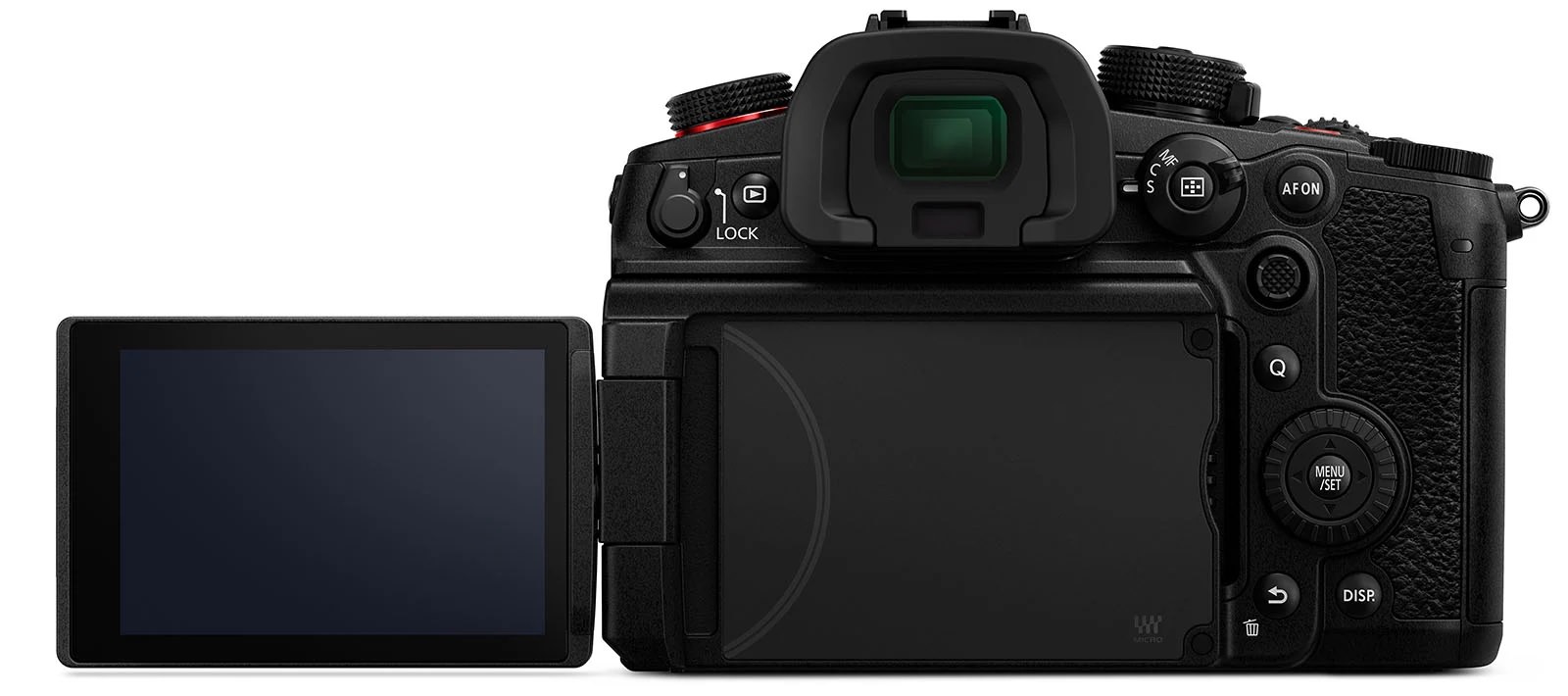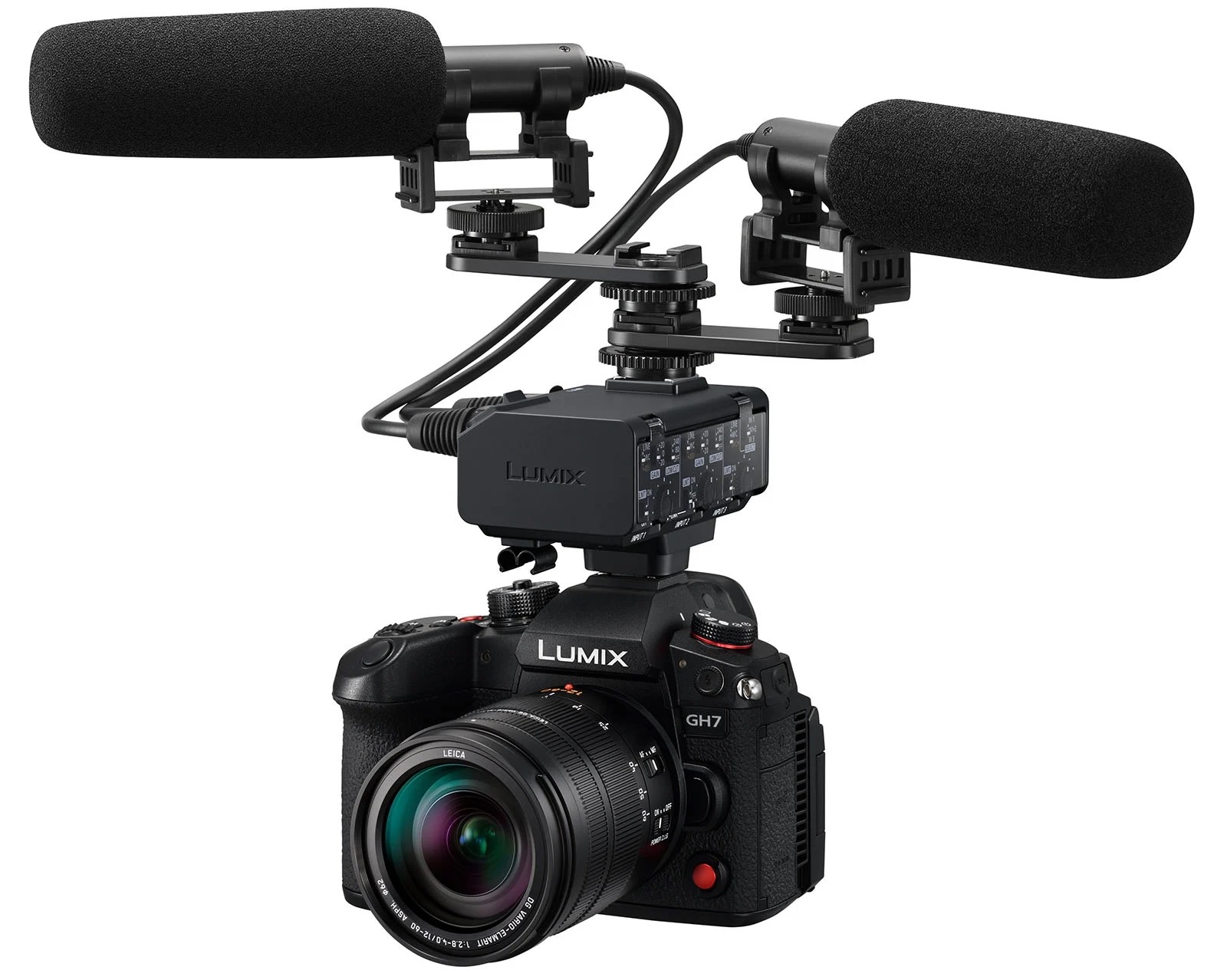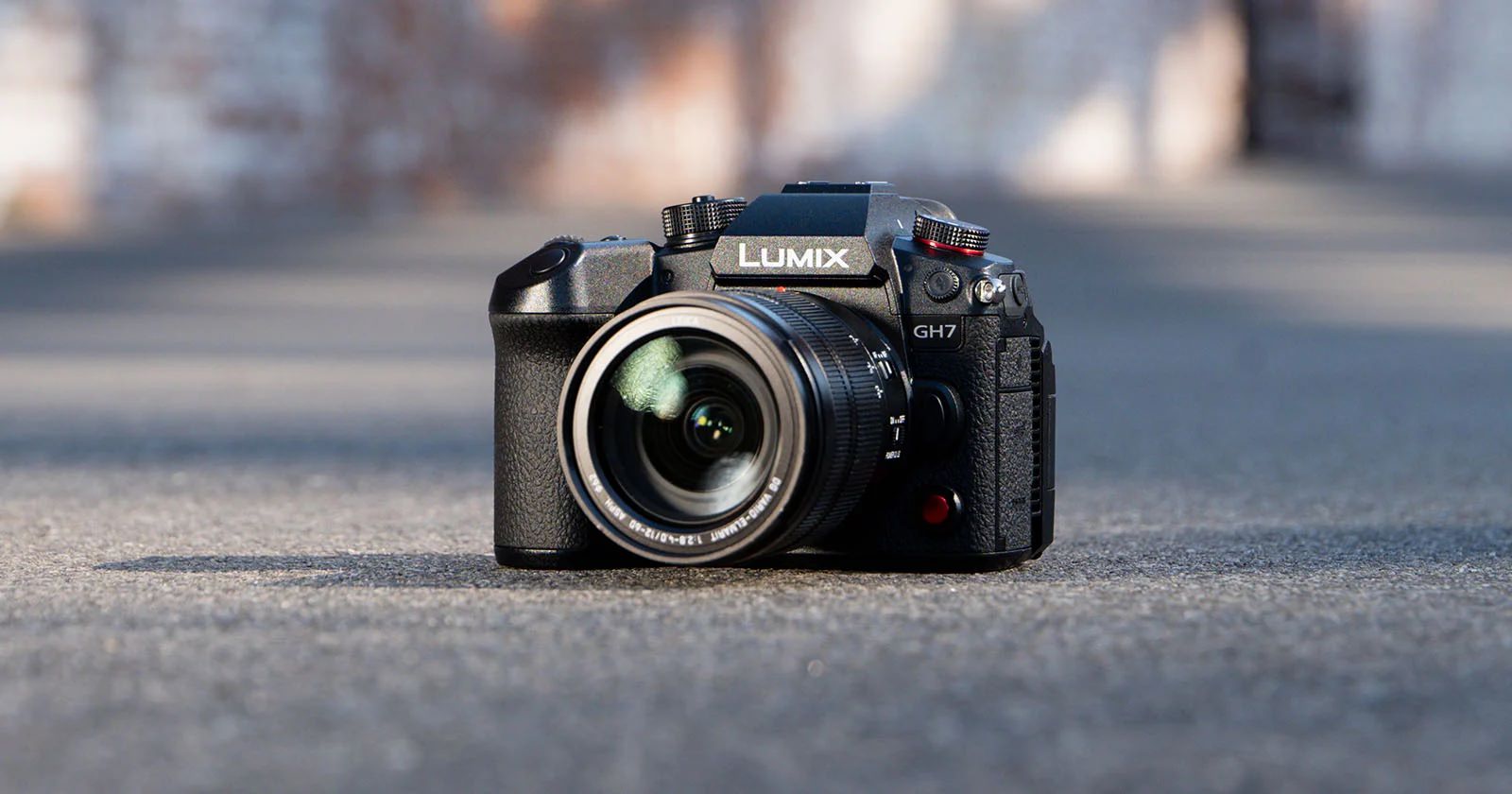Panasonic Announces the Lumix GH7
The GH7, the most recent flagship Lumix G camera, promises excellent video performance thanks to a newly developed 25.2-megapixel BSI CMOS image sensor and better autofocus with phase-detect technology. The camera also includes various pro-oriented workflow advancements, including as internal Apple ProRes RAW recording. It is also the first interchangeable lens camera to support 32-bit float recording.
The GH7’s core is a new 25.2-megapixel BSI CMOS image sensor with faster readout speed and enhanced image quality, including a promised 13-plus stops of dynamic range.
While the sensor has the same number of megapixels as the GH6 chip, it has a fundamentally different architecture and was designed specifically for the GH7. Panasonic claims that the sensor has the essential adjustments to include the updated Dynamic Range Boost (DR Boost) performance from last year’s Lumix G9 II, so it is not simply the GH6 sensor with PDAF pixels added.
The camera has AI-powered subject detection that can follow persons, animals, and a variety of vehicles such as cars, motorcycles, trains, and planes. The latter two subjects are recent additions.
Like the new Lumix S9 full-frame camera, the GH7 is compatible with the new Lumix Lab app, which allows users to build LUTs (lookup tables), which are similar to photo profiles. LUTs have long been used by videographers to achieve the best look for their footage, but they are equally useful for photographers. The GH7 also has additional standard image profiles, including several produced by Leica as part of Panasonic and Leica’s strong partnership. The GH7, unlike the GH6, uses Leica Monochrome.
The GH7’s in-body image stabilization will be useful for both photographers and videographers. The camera has up to 7.5 stops of shake correction and electronic image stabilization (EIS), including a “high” mode that promises even better stabilization with a smaller crop than a full-frame camera with EIS. The IBIS also benefits photographers by providing a 100-megapixel pixel-shift mode that may be utilized completely handled.
The camera has numerous internal recording choices, including 5.7K 30p ProRes 422 HQ and ProRes RAW HQ modes. It also supports 4:2:2 10-bit Full HD video at up to 240 frames per second and 4:2:2 10-bit C4K/4K UHD video at up to 60fps. The camera can also record to both its internal CFexpress Type B card and an external recorder via the full-size HDMI connection. The GH7 also supports full sensor open gate recording, often known as flexible framing, which allows users to record 4:3, 3:2, 16:9, 1:1, and 9:16 videos. The 4:3 video has a maximum resolution of 5.8K and a frame rate of 29.97p, but the 17:9 5.7K video has a maximum resolution of 59.94p. The GH7 can record 4K video at up to 120p, however it is 4:2:0.
In terms of workflow, the GH7 is natively compatible with Frame.io’s Camera to Cloud infrastructure, allowing you to send proxy video files to off-site editors. Photographers can take advantage of this by uploading RAW and JPEG photographs to the cloud while shooting.
The GH7 has major audio upgrades, including 32-bit float recording with the optional new DMW-XLR2 XLR mic adapter.
The camera also enables 4ch audio recording, assuming that users fully utilize the XLR adapter. The XLR has two channels, as does the camera’s 3.5mm audio connection, and both can be divided between two channels. It is possible to achieve 96KHz audio sampling, which is unparalleled in the GH series. 4ch audio is only compatible with MOV and ProRes codecs, by the way.
Like the GH6, the GH7 has an active cooling system. The GH7 has a cooling fan in the back that draws heat from the sensor and recording sections of the camera and pushes it out. The camera also uses smart graphite materials to help expel heat from its internal, hot components.
Active cooling does not preclude weather resistance, as the camera is water and dust resistant. It’s not waterproof, but it’s designed to withstand the demands of professional use, including severe weather.
Panasonic has also announced a collaboration with ARRI to provide a new paid upgrade, software upgrade key DMW-SFU3A, for the GH7. This key, which costs $199.99, adds the ARRI LogC3 curve to the GH7, allowing it to color-match with ARRI cameras. This improvement, while not beneficial to all GH7 users, will make the GH7 particularly useful in high-end projects.
“Shooting in ARRI LogC3 on the Lumix GH7 is ideal for situations requiring greater flexibility, such as mounting on a gimbal or drone.” The Lumix GH7 can readily match colors in shooting settings where cinema cameras, such as the ARRI Alexa Mini, serve as the primary camera,” Panasonic adds.
When the ARRI LogC3 upgrade is loaded, the GH7 employs a curve that adheres to the ARRI gamma’s ISO 800 standard sensitivity. However, because the gamma curve does not alter with ISO sensitivity, users can utilize the same editing technique regardless of ISO level.
Panasonic’s GH7 will be available in July for $2,199.99.

